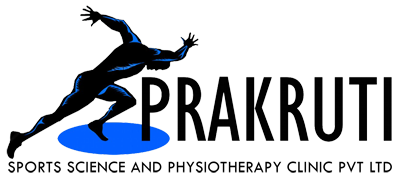Dr Harshada Rajadhyaksha

In Sanskrit, the word “Prakruti” means “Nature”: the primal motive force of the Universe; Ayurveda recognized that no two humans are alike, and called this basic, very unique, individual constitution, “Prakruti”.
At Prakruti Sports Science and Physiotherapy Clinic, we provide the environment, expertise, and support required to assist natural healing.
True healing begins from within the self: Doctors and Healers can only assist along the process. After 22 years, we continue to remain humble in our approach to diagnosis and treatment, our focus remains on the complete wellbeing of our patients, and we continue to promote the prevention of lifestyle-related diseases in the community.
Our patients’ trust and faith in us, and our honest concern for their wellbeing has been the foundation of our success.
Is “gymming” a bad word?
People, who regularly exercise, generally divide themselves into two groups: the ones who love “gymming” and the rest who hate going to the gym. Increasingly, it is more fashionable to train in various other ways: functional training, Pilates, Yoga, Power Yoga, Cross Fit classes, etc. In fact, weight training has almost become a bad word, and we often find it really difficult to convince people of its benefits.
Strength training has several benefits throughout life.
In childhood, though free-play is more important, children in sports may find that training with therabands and body weight exercises, can improve performance and correct imbalances created by their chosen sport.
In young adults, training with weights helps to build strong bones and long strong lean muscles. It helps to develop good posture, increases confidence and enhances personality. It focusses the mind, helps concentration, memory and co-ordination. Well-planned strength training helps injury prevention, as well balanced strong muscles protect joints and ligaments from injury.
In older adults, weight training brings the biggest benefits. It keeps metabolism high at a time that it will naturally slow down, helping to keep body weight in check. It reduces bone erosion and prevents/ delays onset of osteoporosis. It keeps joints healthy by maintaining their range and lubrication. It prevents muscle loss, hence helps preserve the muscles involved with balance and co-ordination. It keeps the brain healthy and sharp. Training with weights helps maintain posture and wellness, keeps the confidence high and prevents several age-related diseases.
In the old, continuing light weight training will ensure better balance, lesser risk of falls and fractures, less bone loss, better mobility and independence, an active brain, better co-ordination and a continued feeling of self-worth.
Why then is weight-training looked at with disdain? Weight training has traditionally been looked at as a means of enhancing appearance, or “bulking up”. The application of training methods hence has been tough and exacting. An “all or nothing” approach that instructors have towards “gym” exercises needs to be reviewed and rethought.
Using the relevant and well-chosen strength exercises with modifications in resistance, repetitions and sets; using different gym and rehabilitation equipment (thera bands, pulleys, weighted cuffs, etc.); mixing up exercises using intermittent cardio; and including some other forms of exercise like Pilates and Yoga can give an interesting, effective and safe exercise plan for any age group.
This entry was posted in Uncategorized. Bookmark the permalink.
RSS || Home Page || Author Profile






